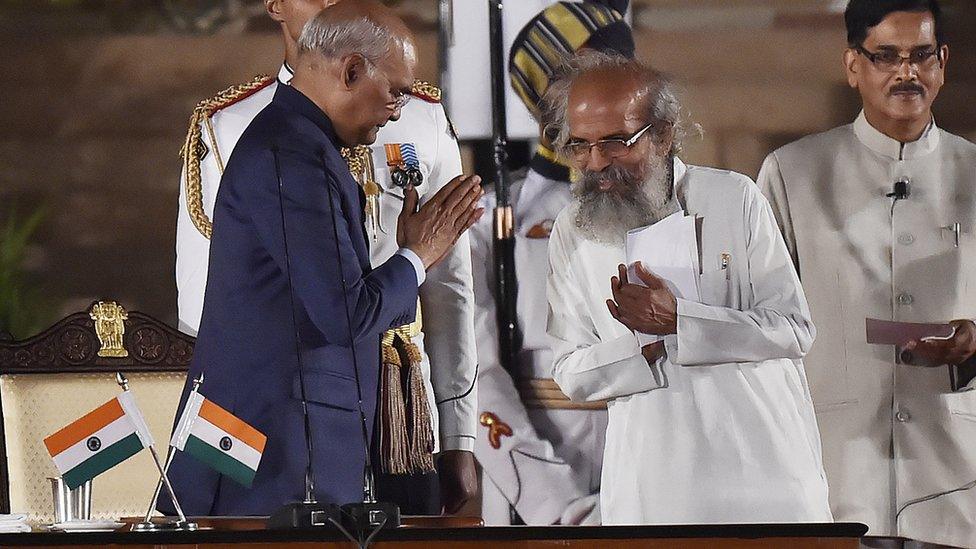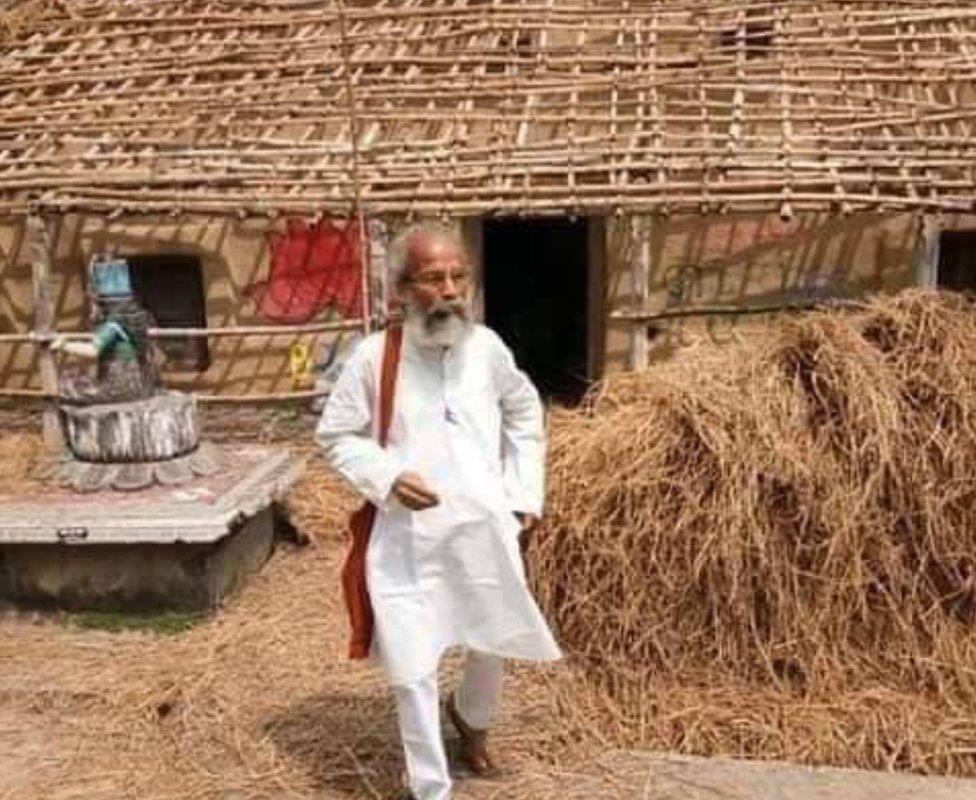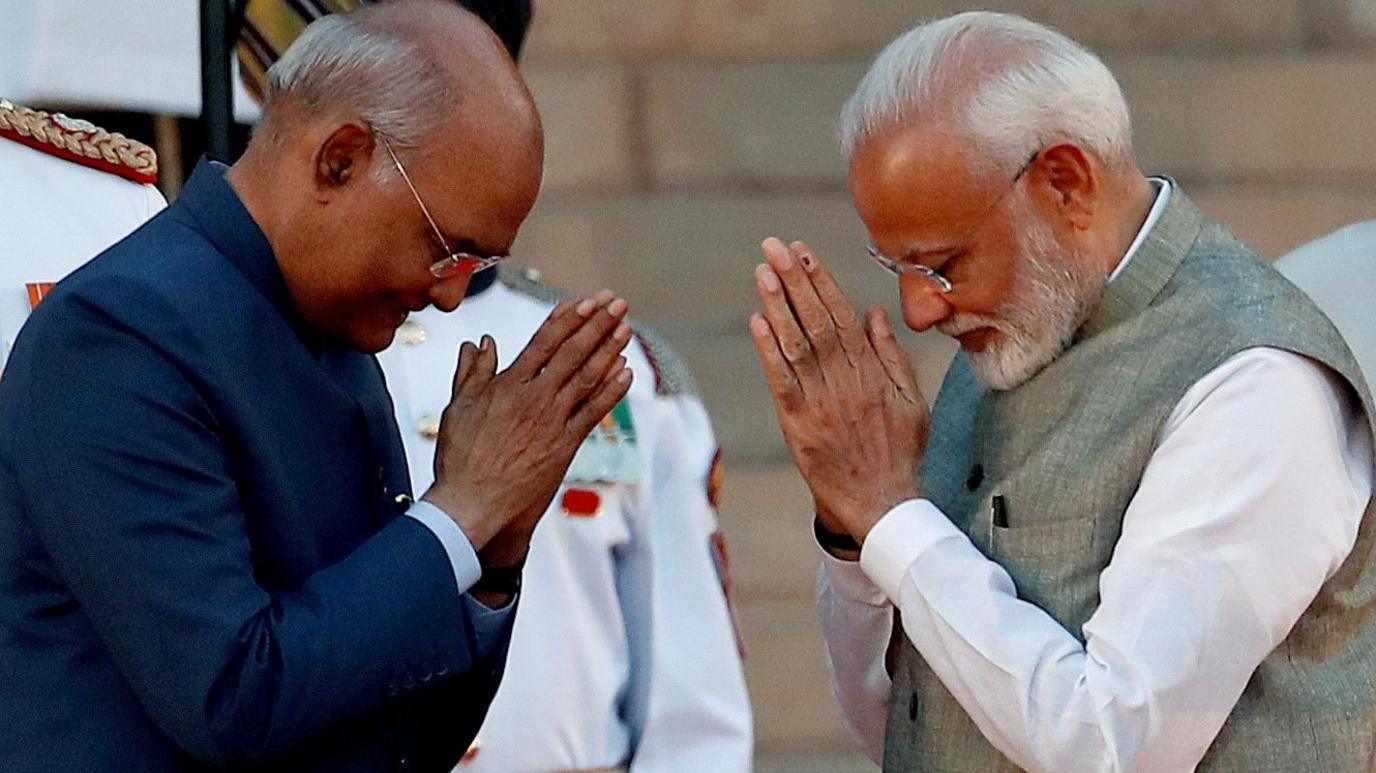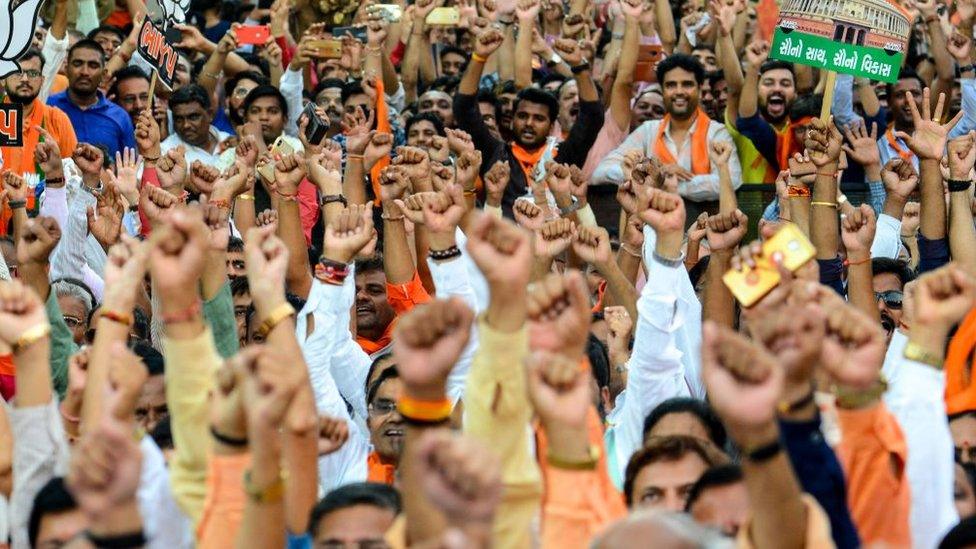Pratap Sarangi: India social media hero minister's dubious past
- Published

Pratap Chandra Sarangi got the loudest applause at the swearing-in ceremony in Delhi
When India's new cabinet was sworn-in on Thursday, the loudest applause was for a little-known, frail-looking man.
Pratap Chandra Sarangi was virtually unknown outside the state of Orissa (now Odisha), until he became a social media sensation this week.
A picture of the austerely-clad man leaving his bamboo hut to take the oath won him hearts in India, where rags to riches stories always strike a chord.
But despite his newfound popularity, Mr Sarangi has a chequered past.
He was the leader of the Bajrang Dal, a hardline rightwing group, when a Hindu mob brutally killed Australian Christian missionary Graham Staines, external and his two children in 1999.
Christian community leaders accused the Bajrang Dal of the killings, but an official inquiry found no evidence that any one group was behind the attack.
After a lengthy trial, Dara Singh, a man with links to the group, and 12 others were convicted in 2003. But the high court in Orissa commuted a death sentence for Singh two years later.
It also freed 11 others who were given life terms in prison, saying there was not enough evidence to support their convictions.

Orissa-based journalist Sandeep Sahu says that Mr Sarangi has given several interviews, including to him, in which he spoke passionately against what he called the "evil designs" of Christian missionaries who are "bent on converting the whole of India".
He added that while Mr Sarangi had condemned the deaths of the two children in the attack on the Staines, he had held fast to his views against conversion.
He was also arrested on charges of rioting, arson, assault and damaging government property, external after a 2002 attack on the Orissa state assembly by Hindu rightwing groups, including the Bajrang Dal.
However, it is not that reputation which has taken centre stage on social media, but pictures of his austere lifestyle.
Allow X content?
This article contains content provided by X. We ask for your permission before anything is loaded, as they may be using cookies and other technologies. You may want to read X’s cookie policy, external and privacy policy, external before accepting. To view this content choose ‘accept and continue’.

Allow X content?
This article contains content provided by X. We ask for your permission before anything is loaded, as they may be using cookies and other technologies. You may want to read X’s cookie policy, external and privacy policy, external before accepting. To view this content choose ‘accept and continue’.

"Mr Sarangi is known for preferring to cycle through his constituency, moving from village to village to meet voters. In the state capital, Bhubaneswar, he would often be seen walking or cycling to attend sessions at the state assembly, having a bite to eat at a modest roadside restaurant or waiting for a train at the railway platform," says Mr Sahu.
When he defeated two much richer, powerful opponents in the recently concluded general elections, it was hailed as a David v Goliath battle.
Modi supporters celebrate after a vote which had been widely viewed as a referendum on the prime minister
As he took oath on Thursday, his constituency burst into celebrations, with supporters setting off firecrackers and distributing sweets. Some people are even calling him "Orissa's Modi" - a reference to the prime minister's humble beginnings.
Correspondents say this exemplifies the problem with social media heroes. Often, one image or an anecdote will capture the imagination of an audience and go viral, causing many to make heroes of people without any in-depth knowledge of who they are or what they have done.
- Published21 January 2011
- Published30 May 2019

- Published27 May 2019
